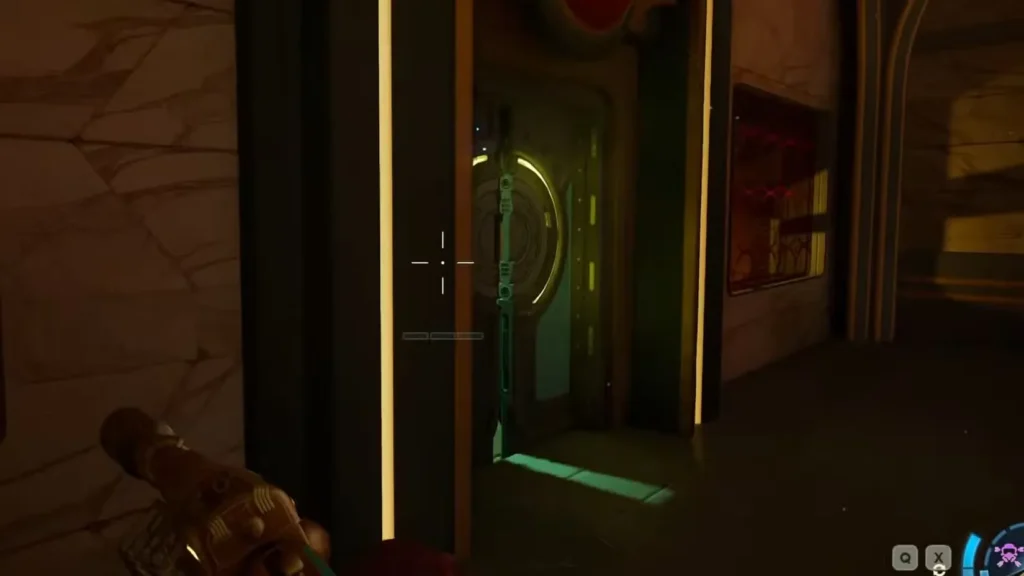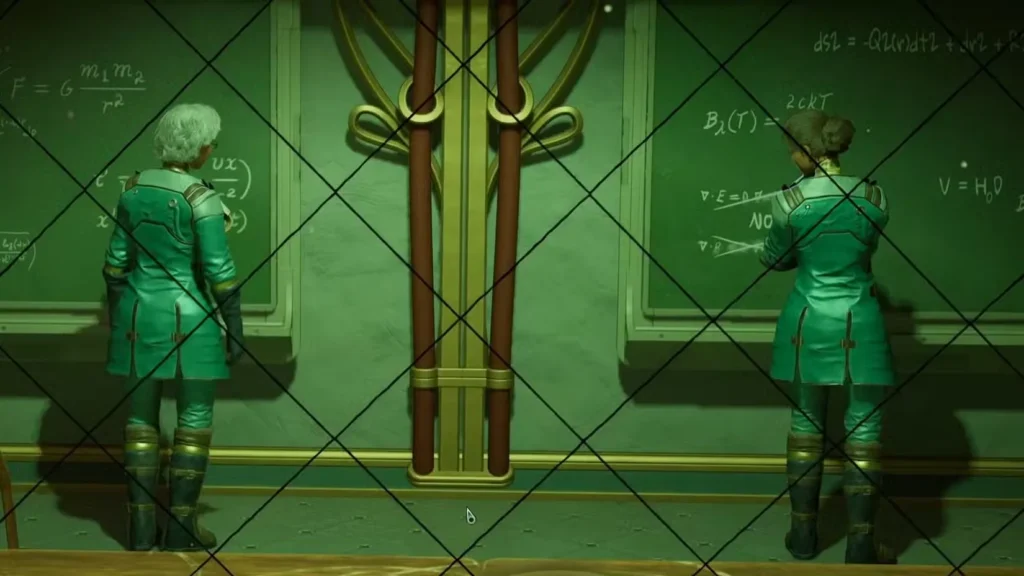
Newsletter Subscribe
Enter your email address below and subscribe to our newsletter

Enter your email address below and subscribe to our newsletter
Your Source for Game News and Guides

Complete walkthrough for The Outer Worlds 2's 'Imprisoned by the Riddles of Reality' quest. Find both books, choose between Anchoress Brun or Chao, and get the best rewards from Alexandra Monastery.
A Philosophical Debate With Tangible Rewards
‘Imprisoned by the Riddles of Reality’ is one of those quintessentially Outer Worlds quests—wrapped in philosophical debate but ultimately decided by which loot you want most. Two Anchoresses trapped in their cells have been arguing about violence, war, and morality for who knows how long. They need books to settle their dispute, and you’re the errand runner who gets to play judge.
What makes this quest interesting: Unlike many side quests that feel disconnected from the world, this one takes place in Alexandra Monastery—a location you’ll visit naturally during the main story. The quest integrates seamlessly with your primary objectives while offering meaningful rewards based on your philosophical choice (or pragmatic loot assessment).
The central question: Is violence sometimes justified as self-defense, or does it always perpetuate cycles of destruction? Your answer determines whether you walk away with heavy firepower or protective gear that enhances mobility.
Let’s break down where to find both books, how to navigate the monastery’s various skill gates, and which Anchoress deserves your agreement (or which reward deserves your attention).
Location: Alexandra Monastery Quest giver: Anchoress Brun and Anchoress Chao (two imprisoned scholars) Availability: Naturally discovered during main story progression through the monastery
The situation: Two Anchoresses have been locked away, possibly for their own safety, possibly for punishment—the monastery isn’t exactly forthcoming about details. They’ve been debating philosophical positions on violence and conflict, but they need specific texts to properly support their arguments.
Your role: Retrieve two books scattered throughout the monastery, return them to the Anchoresses, and then side with one position over the other in their debate.
Quest structure:
Before you can properly search the monastery for books, you need to handle the power situation.
The mechanism: Brun and Chao provide you with a book (likely a manual or instruction guide) that explains how to restore power to the main room. This isn’t a complex puzzle—follow the instructions, interact with the appropriate controls, and the lights come back on.
Why this matters: Power restoration illuminates areas, activates certain doors and systems, and generally makes navigation easier. It’s a mandatory step before progressing deeper into the monastery.
Once power is restored:
Enemy types: Expect cultists, corrupted Order members, or whatever hostile forces have taken over portions of the monastery. Come prepared with appropriate weapons and healing supplies.
For optimal combat readiness, check our Rookie’s Reward guide for early weapon acquisition.
This book is hidden behind a skill-gated door in a room filled with machinery and hostile forces.

Starting from the basement level:
The machinery room:
Visual description: The room should be fairly large with industrial or religious equipment (possibly altar machinery, processing equipment, or other monastery infrastructure) lining the walls. Tables in the center suggest this was a workspace or study area.
Method 1: Forced Entry (Brawny Trait or Engineering 5)
The door: On the south side of this room (upper floor), you’ll find a locked or jammed door.
Requirements:
How it works:
If you have either: Simply interact with the door, pass the check, and enter the room directly.
Method 2: Vent Crawling (No Skill Required)
For builds without Brawny or Engineering 5:
Why this matters: The Outer Worlds 2 consistently provides multiple paths to objectives, respecting different build types. Stealth builds, tech builds, and combat builds all have viable approaches.
Once inside the room (via door or vent), look for a table. The book ‘Only Real Numbers’ sits on this table, clearly visible once you’re in the correct space.
Book collected: One down, one to go.
What this book represents: The title suggests mathematical or logical philosophy—concrete, quantifiable truth rather than abstract moral reasoning. This likely ties into the debate’s themes about objective vs. subjective morality.
The second book requires more verticality and platforming to reach.
Starting point: Return to where you entered through the ‘Be a Hero’ door earlier.
The alternate path: This time, proceed through the ‘Betray Your Values’ door instead.
Don’t panic about the name: Despite the ominous labeling, going through this door doesn’t automatically make you evil or lock you out of content. It’s dramatic naming, not a binding moral contract.
Optional: Complete Wiley’s Puzzle First
Before heading through ‘Betray Your Values,’ you can complete Seer Wiley’s puzzle and free the two hostages if that’s part of your current objectives. The book collection quest doesn’t conflict with other monastery activities—you can multitask efficiently.
After entering ‘Betray Your Values’ door:
Finding the route: On the left side of the room, look for climbing surfaces. The game helpfully marks these with yellow coloring—a visual language indicating “you can climb this.”
What you’re looking for:
The route (following the yellow trail):
Platforming tip: Take your time. Falling means redoing the climb and potentially taking damage. The sequence isn’t difficult, but rushing causes mistakes.
Once on the upper level:
Book collected: Both books acquired!
What this book represents: The title explicitly addresses the cycle of violence and peaceful resolution—directly tied to the Anchoresses’ debate about whether violence is ever justified.
With both books in hand:

Now comes the actual choice—which Anchoress has the more convincing argument about violence and conflict?
When you return with the books, you’ll be presented with three responses:
Option 1: Side with Anchoress Chao “Anchoress Chao is right about it being a loop. Violence only ever begets more violence.”
Position: Pacifist/cyclical violence perspective. This argues that violence perpetuates itself—each act of aggression creates retaliation, which creates counter-retaliation, infinitely. Breaking the cycle requires refusing to participate in violence.
Philosophical framework: Similar to Buddhist or Jain non-violence principles, or Martin Luther King Jr.’s philosophy of non-violent resistance. Violence is inherently destructive and can never truly resolve conflict.
Option 2: Side with Anchoress Brun “Anchoress Brun gets it now. Going to war is sometimes an act of self-defense.”
Position: Just war theory/defensive violence perspective. This argues that while violence is regrettable, sometimes it’s necessary to protect innocent life or defend against aggression. Refusing to defend yourself enables evil to flourish.
Philosophical framework: Similar to just war doctrine, self-defense ethics, or “the only thing necessary for evil to triumph is for good people to do nothing” philosophy. Context matters—violence in self-defense is morally distinct from aggression.
Option 3: Neutral/Dismissive “What kind of crazy circular logic is that? I swear, you two just like to argue.”
Position: Rejecting the debate entirely. You’re suggesting both Anchoresses are more interested in intellectual sparring than actually resolving the question.
Tone: Dismissive, pragmatic, possibly exhausted with philosophical navel-gazing. “Can we just move on with practical solutions?”
Important note: This option likely provides minimal or default rewards rather than the unique items from siding with either Anchoress.
Let’s be honest—most players care more about loot than medieval just war theory. Here’s what each choice nets you.
Weapon stats:
Analysis:
Damage output: This is a monster. The x3 projectile multiplier means each shot fires three projectiles for triple damage. Combined with the base 83 damage, you’re dealing 249 damage per shot—devastating against single targets or clustered groups.
Ammunition considerations: Heavy rounds are less common than standard ammo but not rare. You’ll need to manage supplies more carefully than with pistols or rifles, but the damage justifies the logistics.
Rate of fire: 2.5 shots/second is moderate—not a spray-and-pray weapon but fast enough for sustained fire in intense combat.
Magazine size: 45 rounds means 18 trigger pulls before reloading (since each shot consumes ammo but fires 3 projectiles). Respectable capacity for a heavy weapon.
Weak spot bonus: +45% is excellent. Headshots, exposed power cores, or other vulnerable areas take massively increased damage, rewarding accuracy.
Optimal usage:
Build synergy: Pairs excellently with Guns skill investment, heavy weapons perks, and accuracy/weak spot bonuses. Check our complete perks guide for optimal perk pairings.
Who should choose this: Combat-focused builds, heavy weapons specialists, players prioritizing damage output.
Armor stats:
Analysis:
Armor value: 10 is modest—this isn’t tank armor meant to absorb punishment. It’s light protective gear that complements evasion-focused gameplay.
Evasion chance: +15% is significant. This is probability-based damage avoidance—roughly one in seven attacks will miss you entirely due to this bonus. Stacks with other evasion sources.
Damage resistance: +5% universal damage reduction. Applies to all damage types, making you slightly tankier against everything.
Combat sprint speed: +25% is the standout stat. Faster movement in combat dramatically improves positioning, kiting, and escape capabilities.
Optimal usage:
Build synergy: Pairs with stealth skills, evasion perks, and mobility enhancements. The robes essentially make you a harder-to-hit, faster-moving combatant rather than a damage sponge.
Who should choose this: Stealth builds, mobile combat styles, players prioritizing survivability and positioning over raw armor.
Sawed-Off Heavy Machine Gun (Brun):
Repellent Awakened Seer Robes (Chao):
Neither is objectively better—your build determines which has more value.

No matter which Anchoress you support, you’ll receive these baseline rewards:
Advanced Decryption Key: Used to open high-security lockboxes throughout the game. These lockboxes contain top-tier loot, making the key extremely valuable. See our Advanced Decryption Keys guide for optimal usage locations.
Crude Biomass: Crafting material, likely used for biological or organic-based upgrades and consumables.
Energy Canister: Gadget fuel or crafting component for energy-based equipment.
Foil: Crafting material, potentially for electronics or insulation applications.
Scrap Metal: Universal crafting material for weapons, armor, and mechanical repairs.
1,080 XP: Decent experience boost for a side quest. Contributes to your overall leveling progression.
+1 Reputation for The Order: Small but meaningful reputation increase with The Order faction. Accumulates with other Order-aligned actions to unlock faction benefits.
Value assessment: The shared rewards alone justify completing the quest. The unique gear (weapon or robes) is bonus on top of already worthwhile baseline rewards.
For context on experience and leveling, check our max level cap guide.
Let’s make this practical. Here’s how to decide:
My recommendation: Unless you’re strictly roleplaying, choose based on your build needs. Both unique rewards are excellent—let your character’s strengths and weaknesses guide you.
Beyond loot, the Anchoresses’ argument touches on genuine philosophical questions.
The argument: Violence creates cycles of retaliation. Your aggression justifies my counter-aggression, which justifies your counter-counter-aggression, infinitely. The only way to break the cycle is refusing to participate.
Real-world parallels: Gandhi’s non-violent resistance, MLK’s civil rights movement, Buddhist non-harm principles, Quaker pacifism.
Strengths: Prevents escalation, seeks root causes rather than symptoms, doesn’t perpetuate revenge cycles.
Weaknesses: Vulnerable to aggressors who don’t respect non-violence, potentially enables oppression if taken absolutely, assumes all parties are rational actors.
The argument: While violence is regrettable, self-defense is morally distinct from aggression. Refusing to defend yourself or others enables evil to flourish. Context matters—defensive violence stops aggression rather than perpetuating it.
Real-world parallels: Just war theory, police/military defense doctrine, “good guys with guns” arguments, proportional self-defense laws.
Strengths: Protects innocent life, recognizes real-world threats, acknowledges moral difference between aggression and defense.
Weaknesses: “Self-defense” can be subjectively interpreted, creates justifications for pre-emptive violence, assumes you can distinguish defense from aggression.
By making this a quest with tangible rewards, Obsidian is saying something meta: philosophical positions have practical consequences. Your beliefs about violence inform how you approach the game world—combat vs. stealth, aggressive vs. defensive tactics.
Neither position is portrayed as obviously correct. Both Anchoresses have legitimate arguments, and the game respects whichever you choose.
This quest takes place in Alexandra Monastery, which you’ll visit during main story progression. Here’s how to efficiently integrate the side quest:
Efficiency tip: Don’t make separate trips for book collection. Grab them naturally as you progress through the monastery for other reasons. The books are along paths you’ll likely traverse anyway.
The Order faction: This quest provides +1 Order reputation, synergizing with other Order-aligned activities. If you’re planning to support The Order in major story decisions (like An Equitable Arrangement), every reputation point helps.
Seer Wiley’s puzzle: Completing this is mentioned as optional before getting the second book. These monastery quests interconnect—you’re not just doing isolated tasks.
Main story progression: The monastery is central to late-game story development. Completing side content here enriches your understanding of The Order’s beliefs and internal conflicts.
The error: Lacking Brawny or Engineering 5, players try to force the door open and fail. They then assume the book is inaccessible and abandon the quest.
Solution: Always look for alternate paths. The vent is nearby in the same area—thorough exploration reveals it.
The error: Players select the philosophical position they personally agree with, ignoring whether the reward suits their character build.
Solution: Unless strictly roleplaying, choose based on which unique reward benefits your build most. Your character’s equipment matters more than agreeing with fictional philosophers.
The error: Players think the neutral/dismissive response is a joke option but accidentally select it, missing out on unique rewards.
Solution: Read dialogue carefully. The neutral option is clearly dismissive and offers no unique gear. Only choose it intentionally.
The error: Leaving the monastery without finishing the quest, then having to return later (wasting fast travel time and immersion).
Solution: Complete the quest before leaving the area since you’re already there with both books.
The error: Stealth builds taking the heavy machine gun, or combat builds taking the robes, because they rushed the choice.
Solution: Take a moment to evaluate which reward genuinely benefits your character. The machine gun is worthless if you never use heavy weapons. The robes are wasted on characters who don’t dodge or sprint.
If you’re doing multiple playthroughs:
This maximizes your understanding of quest outcomes without replaying the same choice repeatedly.
Create a save before making your final choice between Brun and Chao. This allows you to:
Pay attention to companion reactions during the philosophical debate. They may comment on your choice, providing character development and relationship depth. Some companions might approve of pacifism, others of defensive violence.
For more on companion relationships, see our complete companions guide.
The +1 Order reputation seems minor, but every point contributes to faction standing. If you’re pursuing Order-aligned endings or need Order vendor access, every quest that provides reputation matters.
Our all factions guide details how reputation thresholds unlock benefits.
Can you get both unique rewards? Not in a single playthrough. You must choose one Anchoress, receiving only that reward. Multiple playthroughs required for both.
Does the choice affect story outcomes? Not significantly. This is primarily a loot-based decision rather than a story-branching choice. Your philosophical alignment doesn’t drastically alter the narrative.
Can you change your mind after choosing? No. Once you select an Anchoress and receive rewards, the choice is permanent for that playthrough. Load your pre-dialogue save if you want to change.
Are the skill requirements for Book #1 door mandatory? No. The vent provides a skill-free alternative. All builds can complete this quest regardless of trait or skill selection.
Is the neutral option worth it? Probably not, unless strictly roleplaying. You miss unique gear for essentially no benefit beyond expressing your character’s personality.
Do companions react to your choice? Potentially. Companions may comment on your philosophical alignment, though it’s unlikely to significantly impact relationships compared to major story choices.
Major Story Quests:
Weapon & Gear Guides:
Character Building:
Progression & Loot:
Monastery Related:
‘Imprisoned by the Riddles of Reality’ exemplifies The Outer Worlds 2’s design philosophy: wrap meaningful choices in accessible packaging. You’re not just collecting books and picking dialogue—you’re engaging with genuine ethical questions about violence, defense, and moral responsibility.
But let’s be real: Most players will choose based on whether they need a devastating heavy weapon or evasion-boosting armor. And that’s fine. Obsidian knows you’re playing a video game, not attending philosophy seminar.
The beauty is having both options. You can engage deeply with the thematic content if you want, or you can pragmatically assess which reward benefits your build. Both approaches are valid, and the quest accommodates either mindset.
My personal recommendation: Choose based on build needs during your first playthrough, but take a moment to actually read the Anchoresses’ arguments. Obsidian’s writers put thought into these debates—they deserve at least cursory engagement beyond “which loot do I want?”
Now get out there, collect those books, and decide whether violence is ever justified (or more importantly, whether you need that machine gun). The Anchoresses are waiting, and they’ve been arguing for far too long without resolution.
Time to put at least one of them at peace—or condemn them both to further eternal debate if you choose the neutral option. Your call, philosopher-warrior.
Official Outer Worlds Information: